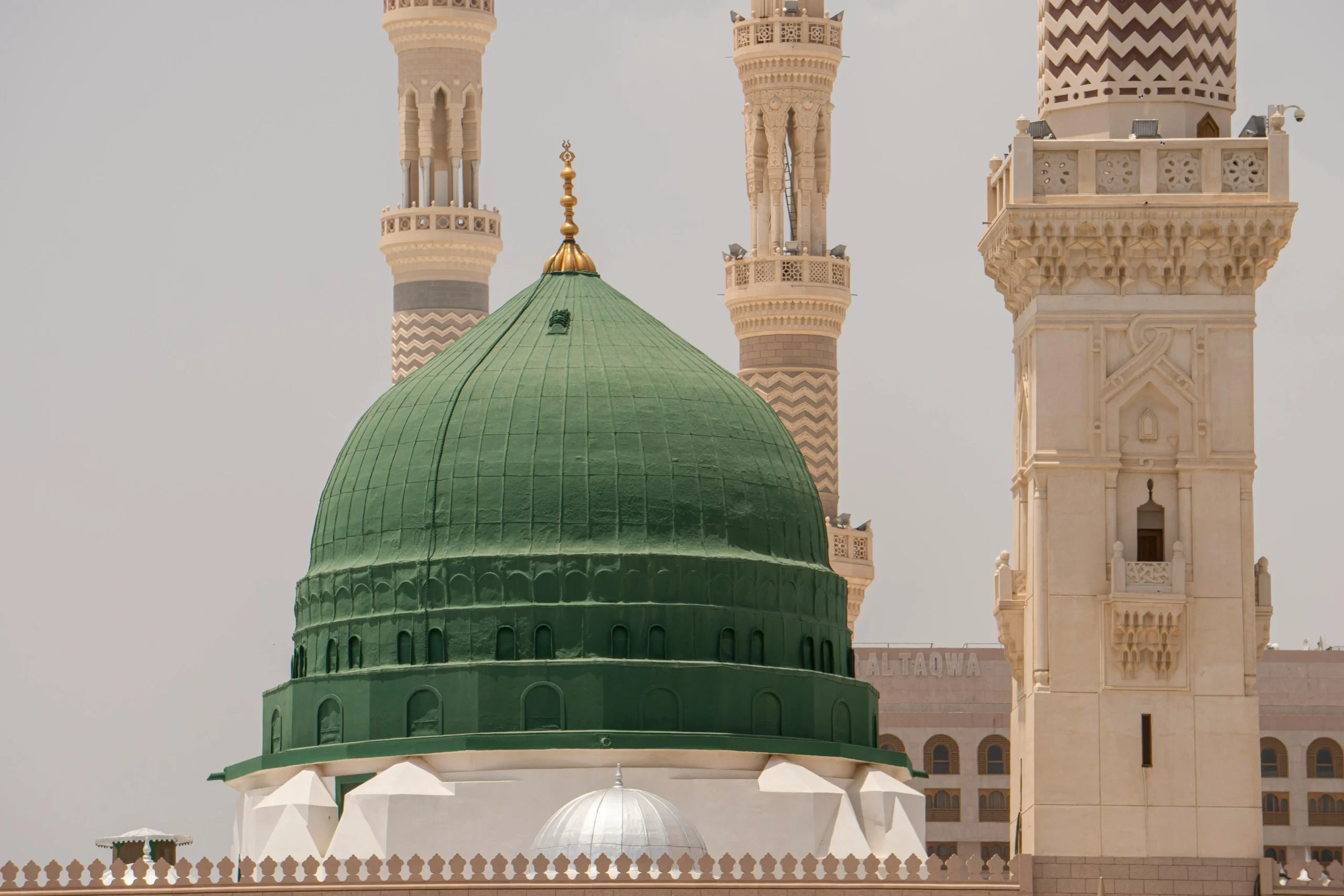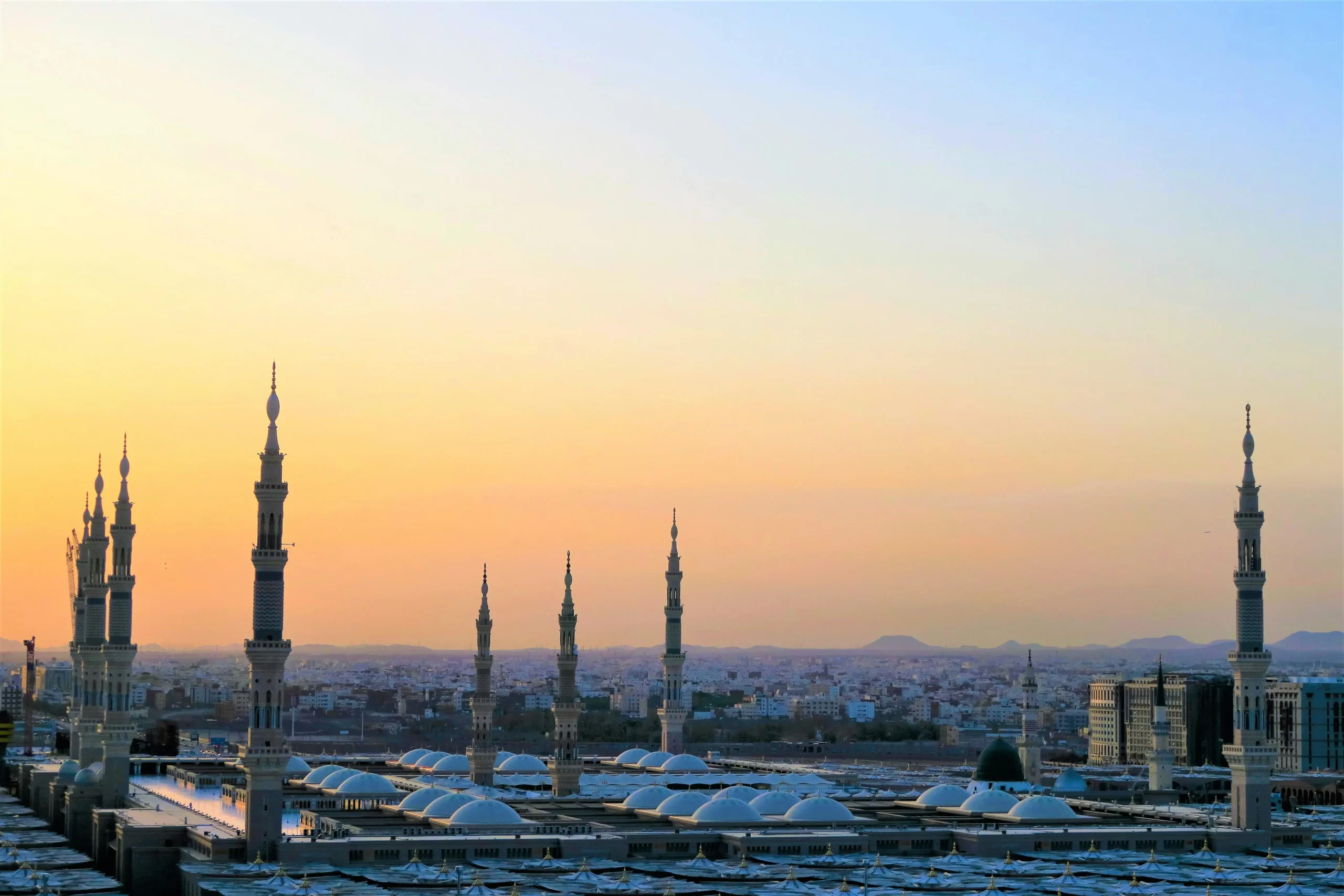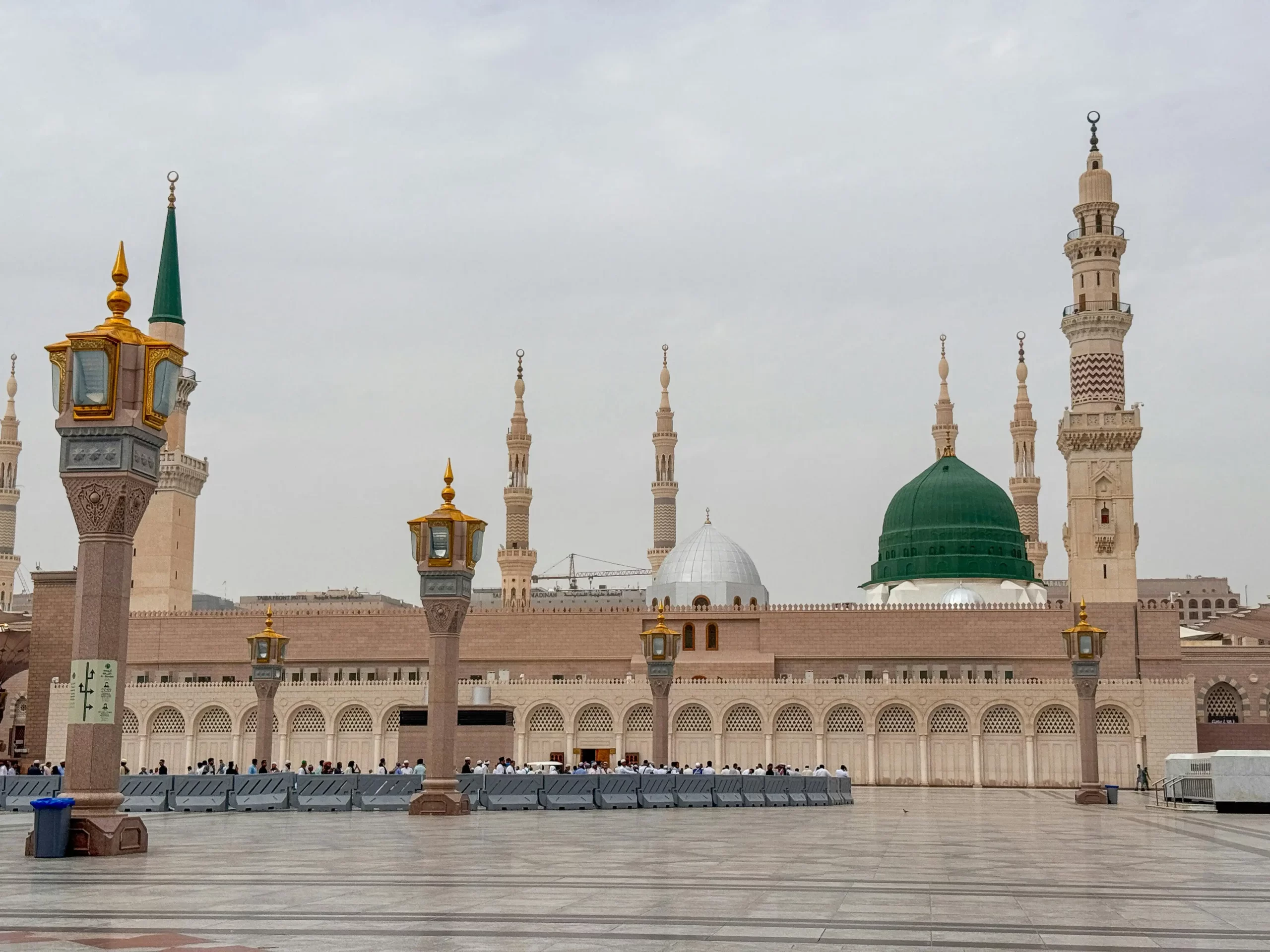The Nabawi Mosque was originally built and established by Prophet Muhammad (PBUH). It is located in Medina, Saudi Arabia, and is considered the second holiest mosque in Islam after the Grand Mosque (Masjid Al-Haram) in Mecca. Throughout history, Masjid al-Nabawi has been renovated several times.
The current structure of the Prophet’s Mosque (PBUH) dates back to the early 1990s. Featuring a magnificent green dome, the white marble floors of Masjid al-Nabawi hold the tears of billions of Muslims. The Prophet’s Mosque is a revered place for the believers of Allah (SWT) and the descendants of Prophet Muhammad (PBUH).
Known as the Prophet’s Mosque, Masjid al-Nabawi is not only the focal point of the city but is also referred to as ‘the heart of Medina.’ Prophet Muhammad (PBUH) established the mosque in the first year of Hijrah (migration) with the intention of creating a place where congregational prayers would be offered five times a day without any obstacle.


Prophet Muhammad (PBUH), during his visit to Masjid al-Nabawi, said: ‘Whoever visits me after my death is like the one who visited me during my life. When a person stands before my grave and sends blessings upon me, I hear it, and whoever calls for blessings upon me elsewhere, all their needs in this world and the hereafter will be fulfilled, and on the Day of Qiyamah, I will be their witness and intercessor.’
Merits of Masjid An-Nabawi
The mere fact that it is located in the sanctified city of Medina (where even the Antichrist will not be able to enter) is enough as a distinction.
Furthermore, it was built with the blessed hands of the best of men.
Several famous Hadiths highlight the prestige of this structure.
‘Do not undertake a journey to pray except to these three mosques: the Masjid Al-Haram (in Mecca), the Prophet’s Mosque (in Medina), and Masjid Al-Aqsa (in Jerusalem),’ as narrated by Abu Huraira (RA), reported by Malik, Al-Bukhari, and Muslim.
In short, it is prohibited to travel with the intention of visiting any mosque except these three holy sites of Islam.
‘The space between my house and my pulpit is a garden (rawda) among the gardens of Paradise, and my pulpit is above my basin,’ as narrated by Abu Huraira (RA), reported by Bukhari (Sahih no. 6588) and Muslim in his Sahih no. 1391.
What is evident is that anyone who prays in this space receives great reward.
‘A prayer in my mosque is better than a thousand prayers in other mosques, except in Masjid Al-Haram,’ reported by Ahmad and authenticated by Shaykh Albani.
A prayer in the Sacred Mosque of Mecca is worth one hundred thousand prayers performed elsewhere.
An indescribable sense of well-being!
The blessed ones who have had the chance to visit it find no words strong enough to describe the serenity that prevails there. Also, if the opportunity to travel there with Kay Ziarra presents itself to you, do not hesitate for a second; it is truly worth its weight in gold!


